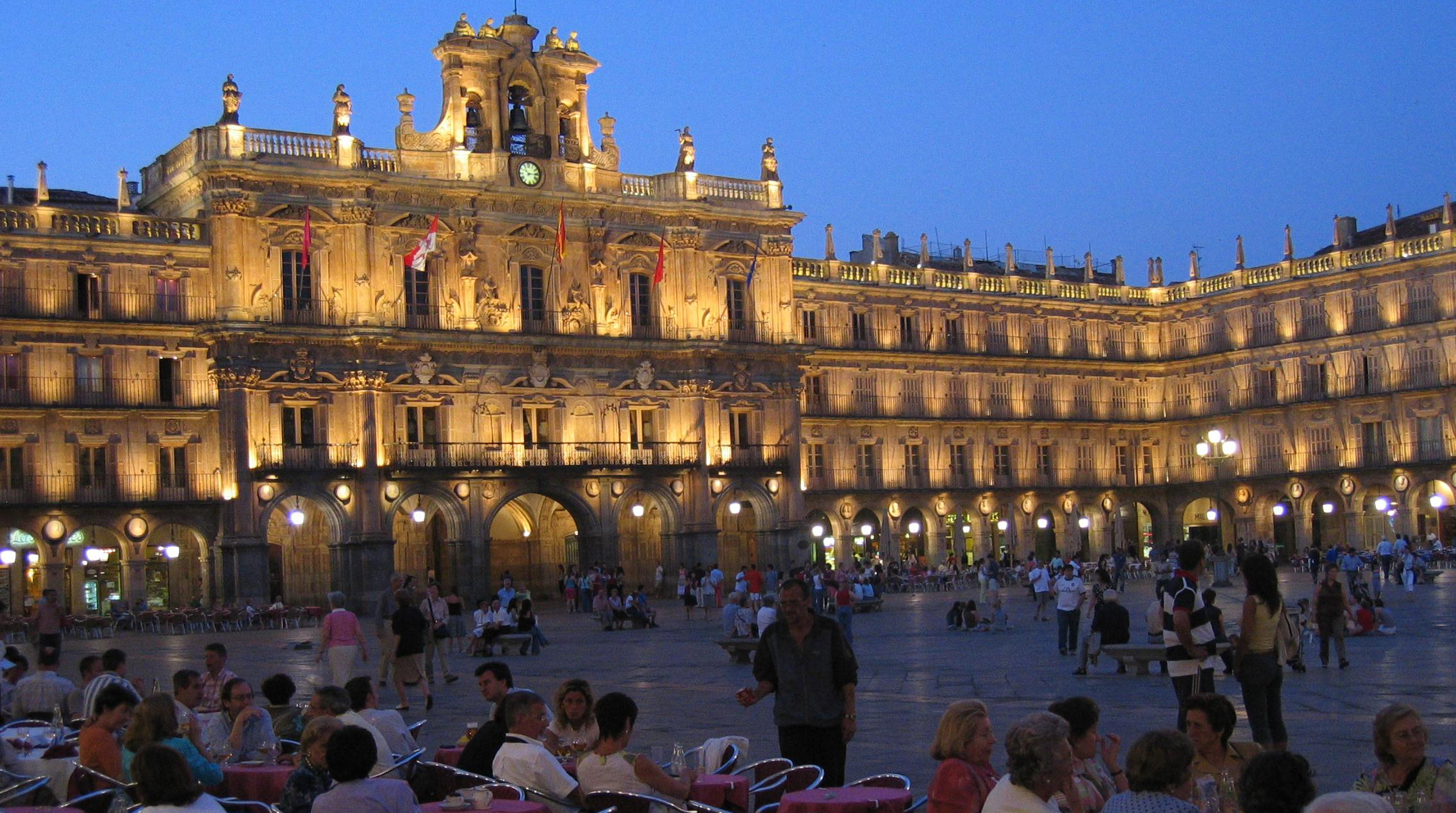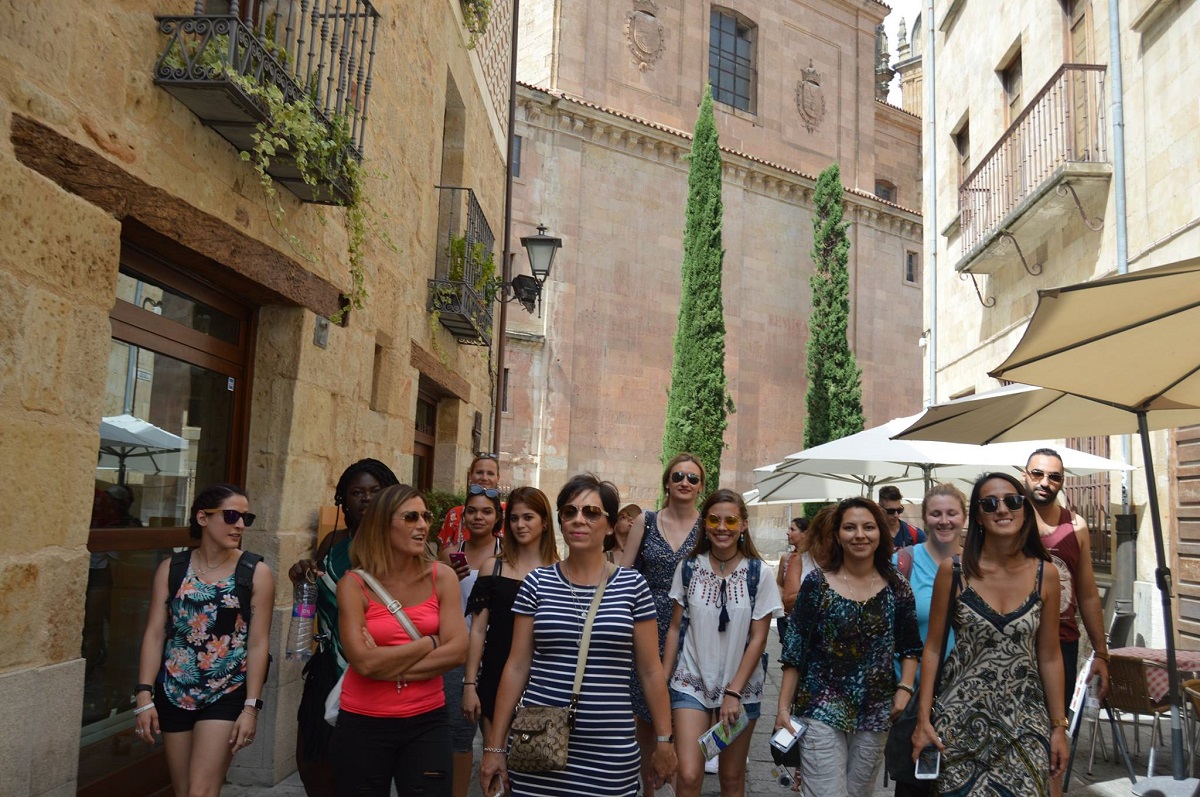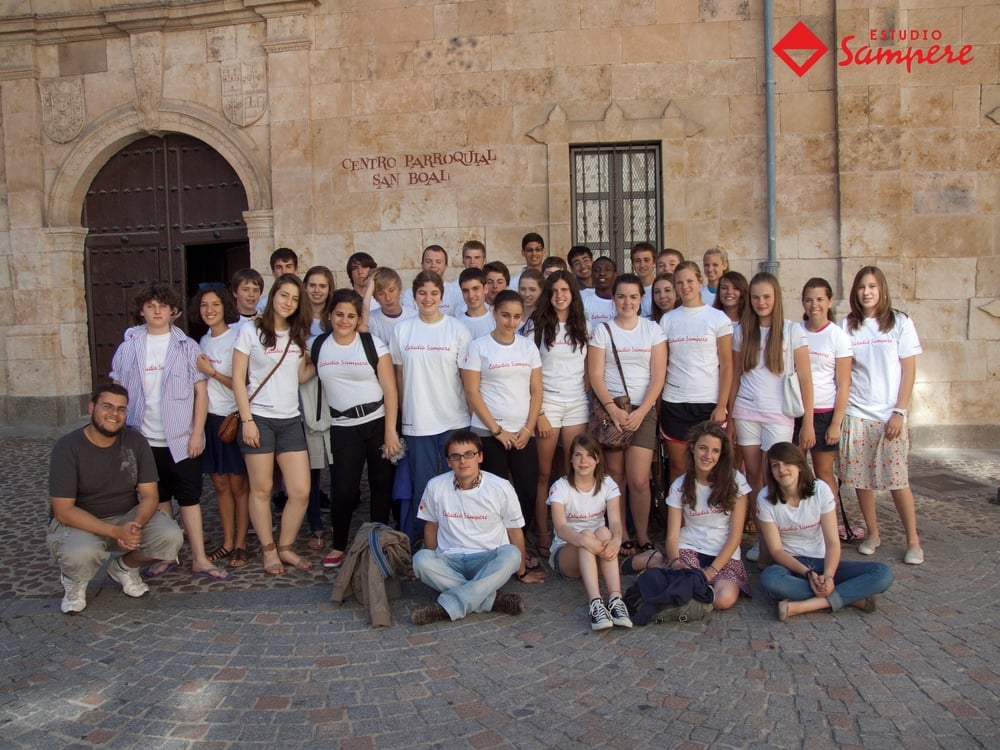
Spanish Courses in Salamanca
Overview
Salamanca
Salamanca is a rich and vibrant city, northwest of Madrid. It is home to The University of Salamanca, one of the oldest in Europe, and although it is relatively small, with only 170,000 inhabitants, there is plenty to do for students. There is an exciting nightlife and many restaurants, bars and shops, many in or hear the hub of the city, the famous Plaza Mayor. Salamanca is also home to charming historic sites and stunning architecture that can be explored on foot, including museums, palaces, religious buildings and squares. For these attractions, Salamanca’s old city was named as UNESCO World Heritage site in 1988. Additionally, the fact that most of its buildings are made of sandstone has given Salamanca the nickname of La Dorada, or the “Golden City,” as a result of the golden glow the architecture bestows on everything.
Why Study Spanish in Salamanca?
The best reason to study Spanish in this city is the university and the region of Spain in which it is located. Like Oxford and Cambridge in England, the University of Salamanca is Spain’s oldest and best-known university. There are thousands of Spanish and foreign students in the summertime and year round, many of whom seek language exchanges. The entire Old City caters to students and the large, central Plaza Mayor is a great place to meet them outside of class. Salamanca itself is located in the region of Castilla Leon, where the dialect-free Castillian Spanish is spoken (“Spanish” to Spanish speakers is known as “Castellano,” as opposed to Catalan and other Spanish languages, for example). Studying Spanish in this region will make it easy to understand it in other parts of the Spanish-speaking world.
Language Schools and Camps in this Destination
In Salamanca, Marshall Language Services also works with the following Spanish language schools:
- Estudio Sampere (Adults and Teenagers)
- Don Quijote (Adults and Teenagers)
- Colegio Delibes (Adults and Teenagers)
Images of Salamanca, Spain
Things to Do and See During a Vacation Study
Plaza Mayor
The Plaza Mayor is the main square, the bustling hub of the city, filled with cafés, restaurants and shops. Visitors can people-watch, sip a coffee, buy souvenirs, or have a bite to eat, sometimes to sound of a traditional tuna in the background. At night, the plaza is illuminated and majestic.
Cathedrals of Salamanca
Salamanca has two cathedrals, the Old Cathedral and the New Cathedral, which are located next to each other and connected. The Old Cathedral is a Romanesque-style building, built in the 14th century. The construction of the New Cathedral began in the following century due to the large numbers of students coming to the city to study at the University. The New Cathedral was constructed in Gothic and Plateresque styles, and finished in 1733.
Casa de las Conchas (House of Shells)
The Casa de las Conchas is a Gothic-style building completed at the end of the 15th century. The outside of this building is beautifully decorated with over 300 shells.
University of Salamanca
The buildings of this famous university are themselves the main attractions. The entrance is in a Plateresque style and it is a tradition for people to try to spot the frog carved amongst the intricate designs (legend has it that finding the frog will ensure that students pass their exams.)
Casa Lis Art Nouveau and Art Deco Museum
This is a museum built in 1995, containing 2500 pieces in 19 collections spanning the late 19th and early 20th centuries. The museum is partially made of stained glass.
Nature Park Arribes del Duero
The dazzling nature park Arribes del Duero is located just outside of Salamanca, forming the natural border between Spain and Portugal. It features one of the largest inland lakes in Europe, and its steep mountains are a popular region for wine production. South of the lake, visitors can find the stunning Pozo de los Humos waterfall surrounded by Mediterranean flora.
Convento de San Esteban
This convent was built for the Dominicans in the 16th and 17th centuries, and consists of three cloisters, the most noteworthy of which is the Royal Cloister. The building is another of Salamanca’s prime examples of Plateresque architecture, with Baroque and Renaissance elements: the intricate carvings on its façade are particularly remarkable.
Roman Bridge
The Roman Bridge spans the River Tormes and is estimated to have been constructed in the first century A.D. under the Roman Emperor Marcus Ulpius Traianus. The bridge measures 176 meters in length and features 26 semicircular arches, reprensenting Salmantine art influenced by Celtic elements, and offers excellent views over the Old and the New Cathedral. It has been declared a National Monument and is particularly beautiful when lit up at night.
Clerecía Church
This church is located in the Old City and was built in 1617. It was originally known as the Royal College of the Company of Jesus. It features typical Baroque elements in the church and school rooms, and a private section in which the monks used to live. Its towers were built to bring believers closer to heaven and offer a dazzling view over the roofs of the city. There is also a beautiful Patio Barroco, which is surrounded by a two-story cloister and the Escalera Noble. Nowadays, the Clerecía is the headquarters of Salamanca Pontificia University.
How to Arrive at your Language Course
By Air
Adolfo Suárez Madrid-Barajas Airport is the closest airport to Salamanca (215 km). There is a bus service from and to the airport that connects Madrid and Salamanca (2.5 hours). More information about it is available here.
By Train
Visitors traveling from Madrid can take a direct train to Salamanca from the Chamartin Train Station.
Visitors traveling from Barcelona can take a train, bus, or another flight.
Visitors travelling from another airport in Spain can find more information here.


